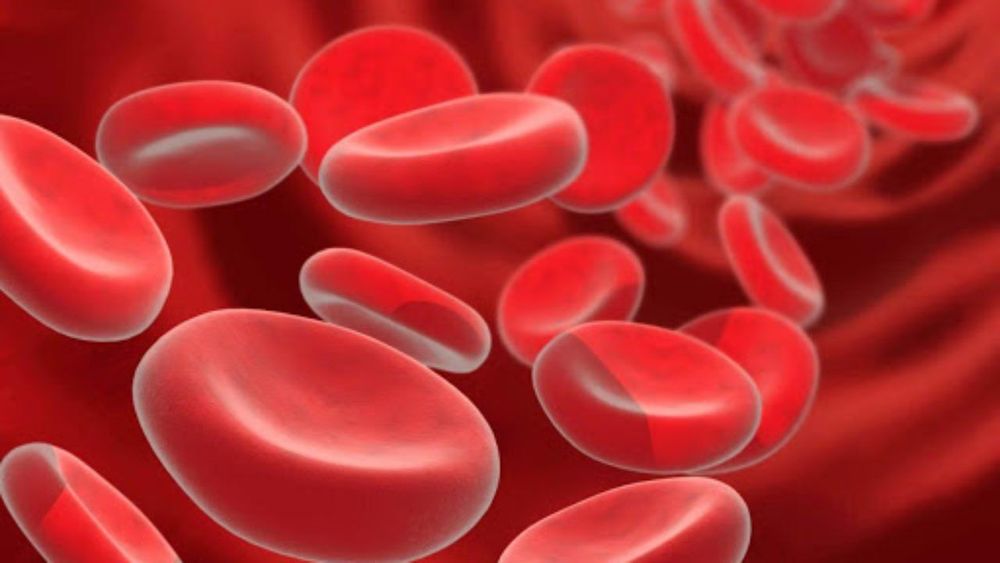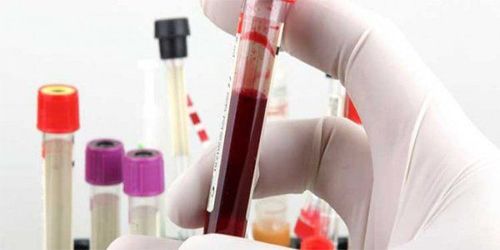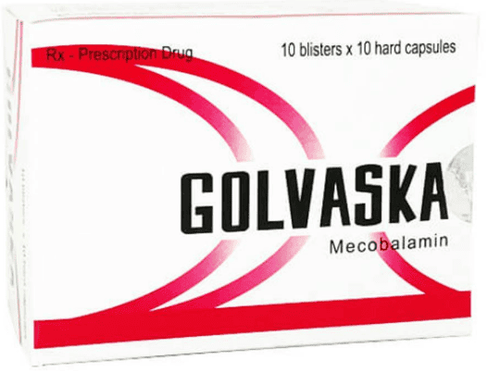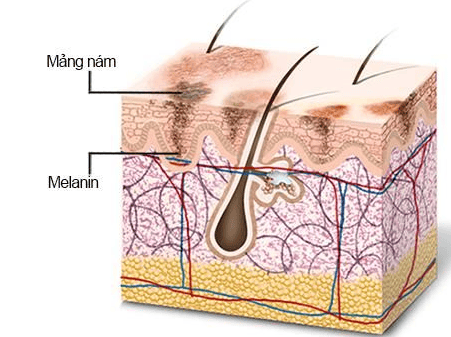This is an automatically translated article.
Red blood cells are a blood cell that helps carry oxygen to the organs, for the cells in the body to use. In some diseases of the red blood cells, there can be a change in the size of the red blood cells, making them smaller or larger than normal.
1. What is the normal size of red blood cells?
The main function of red blood cells is to transport hemoglobin, which is a substance that binds oxygen from the lungs to exchange with the body's tissues. In addition, red blood cells contain large amounts of carbonic anhydrase, an enzyme that catalyzes the faster reaction between CO2 and water to produce carbonic acid (H2CO3). From there, it can help convert a huge amount of CO2 from the tissues into HCO3- form to bring back to the lungs, in the pulmonary capillaries it turns back into CO2 and is released into the air through the respiratory tract as a waste product of the body. .On microscopy it was found that the erythrocytes were normal, nucleated, and biconcave, with an average diameter of 7.8 micrometers and a thickness of about 2.5 micrometers at their thickest point. about 1 micrometer or even smaller in the central position. The mean erythrocyte volume is about 90 to 95 μm3.
The shape of a normal red blood cell can change dramatically when it is deformed to pass through small capillaries. Red blood cells have a large membrane excess for the contents inside, so this deformation does not unduly stretch the membrane and does not rupture the cell.

Kích thước hồng cầu có đường kính trung bình từ 7,8 micrometers
2. Diseases that cause changes in red blood cell size
Red blood cells can experience many different diseases that change the shape and size of red blood cells. Here are some red blood cell diseases that cause red blood cell size changes including:
2.1. Megaloblastic anemia Megaloblastic anemia is anemia in which the red blood cells are larger than normal. Causes of megaloblastic disease include:
Vitamin B12 deficiency: The most common cause of B12 deficiency is pernicious anemia due to decreased secretion of endogenous factors (usually secondary to autoantibodies). . Other common causes are malabsorption due to gastritis or tapeworm infection, rarely diet. Deficiency of vitamin B12 deficiency Folate deficiency: Common causes of folate deficiency include celiac disease and alcoholism. Manifestations of megaloblastic anemia:
Anemia manifestations such as fatigue, pale skin and mucous membranes... often take place silently, not clearly. Gastrointestinal manifestations may include diarrhea, mucositis, and anorexia. Blood tests: Usually, there are signs of anemia such as red blood cell count, decreased hemoglobin, accompanied by MCV (mean red blood cell volume) higher than 100fl, RWD (red blood cell distribution range) increased. On the blood smear, the red blood cells are large, oval, and irregular. Test more vitamin B12 to determine the cause of the disease. 2.2. Microcytosis Microcytic anemia is defined as an anemia in which the red blood cell count is smaller than normal. Some possible causes of this condition include:
Iron deficiency: Iron is a material that makes hemoglobin, so when the body is iron deficient, red blood cells contain less hemoglobin, making them smaller in size. . Possible causes of iron deficiency include chronic blood loss, lack of supply, increased demand... Thalassemia Hemolytic anemia: This is a genetic disease that affects the total globin chain of hemoglobin. Lead poisoning: May be caused by frequent exposure to sources of lead containing substances. Red blood cell anemia: This is due to a congenital or acquired cause that affects the production in the bone marrow. Chronic inflammation: Also causes more iron to be stored than usual in the cells. Causes the body to lack a blood source, which can be seen in cancer, rheumatoid arthritis ...

Một số bệnh viêm mạn tính có thể là nguyên nhân gây kích thước hồng cầu nhỏ
Manifestations of microcytic anemia depending on the degree of anemia:
Fatigue, dizziness, blue or yellow skin. Heart palpitations or palpitations. Pale mucous membranes, brittle nails. Shortness of breath, rapid breathing. Laboratory tests: Signs of anemia such as normal or sometimes increased red blood cell count, decreased hemoglobin, with MCV (mean red blood cell volume) less than 80fl are found, often with MCH (mean hemoglobin level) is present in a red blood cell) below 28pg/l, the RWD (red blood cell distribution range) is usually normal or elevated. Tests for the cause such as serum iron, ferritin (storage iron), hemoglobin electrophoresis if thalassemia is suspected. 2.3. Normal size red blood cell anemia Normal red blood cell anemia is anemia in which the size of red blood cells is normal. It is common in acute blood loss due to trauma or hemorrhagic disease.
The manifestations of this anemia are often similar to but more pronounced than those of chronic anemia. Accompanying laboratory tests showed decreased red blood cell and hemoglobin counts, but normal MCV and MCH.
Changes in the normal size of red blood cells can be seen in many different erythropoiesis. Adequate nutrition, especially during periods of increased demand such as pregnancy, injury, infection... is a measure to help prevent anemia.
Please dial HOTLINE for more information or register for an appointment HERE. Download MyVinmec app to make appointments faster and to manage your bookings easily.











